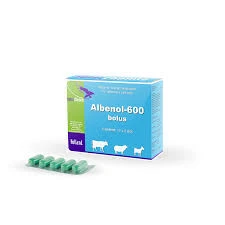- Afrikaans
- Albanian
- Amharic
- Arabic
- Armenian
- Azerbaijani
- Basque
- Belarusian
- Bengali
- Bosnian
- Bulgarian
- Catalan
- Cebuano
- Corsican
- Croatian
- Czech
- Danish
- Dutch
- English
- Esperanto
- Estonian
- Finnish
- French
- Frisian
- Galician
- Georgian
- German
- Greek
- Gujarati
- Haitian Creole
- hausa
- hawaiian
- Hebrew
- Hindi
- Miao
- Hungarian
- Icelandic
- igbo
- Indonesian
- irish
- Italian
- Japanese
- Javanese
- Kannada
- kazakh
- Khmer
- Rwandese
- Korean
- Kurdish
- Kyrgyz
- Lao
- Latin
- Latvian
- Lithuanian
- Luxembourgish
- Macedonian
- Malgashi
- Malay
- Malayalam
- Maltese
- Maori
- Marathi
- Mongolian
- Myanmar
- Nepali
- Norwegian
- Norwegian
- Occitan
- Pashto
- Persian
- Polish
- Portuguese
- Punjabi
- Romanian
- Russian
- Samoan
- Scottish Gaelic
- Serbian
- Sesotho
- Shona
- Sindhi
- Sinhala
- Slovak
- Slovenian
- Somali
- Spanish
- Sundanese
- Swahili
- Swedish
- Tagalog
- Tajik
- Tamil
- Tatar
- Telugu
- Thai
- Turkish
- Turkmen
- Ukrainian
- Urdu
- Uighur
- Uzbek
- Vietnamese
- Welsh
- Bantu
- Yiddish
- Yoruba
- Zulu
Dec . 03, 2024 23:32 Back to list
Types of Disinfectants Commonly Used in Veterinary Practices
What Disinfectant Do Vets Use?
Veterinarians play a crucial role in ensuring the health and well-being of animals, and one of their most important responsibilities is maintaining a clean and safe environment. To achieve this, they rely on a variety of disinfectants specifically formulated for use in veterinary settings. Understanding what disinfectants veterinary professionals use, and why they choose them, can provide valuable insights into animal care and hygiene practices.
Importance of Disinfection in Veterinary Medicine
In any medical field, cleanliness is paramount, but it is particularly critical in veterinary medicine due to the variety of species being treated and the different pathogens they carry. Animals can harbor bacteria, viruses, fungi, and parasites that pose risks not only to them but also to humans and other animals. Disinfectants help to eliminate these harmful microorganisms and prevent the spread of diseases, making the clinic a safe place for patients and staff alike.
Types of Disinfectants Commonly Used
Veterinary clinics employ various types of disinfectants, each serving a specific purpose depending on the scenario
. Here are some of the most commonly used disinfectant categories1. Quaternary Ammonium Compounds (Quats) Quaternary ammonium compounds are widely used in veterinary clinics due to their effectiveness against a broad spectrum of pathogens. They are particularly effective on surfaces and are often used for general cleaning. Quats are known for their low toxicity, making them safe for use around animals and humans. They are commonly used on non-porous surfaces such as countertops, floors, and surgical instruments.
2. Phenolic Compounds Phenolic disinfectants are powerful agents that can kill bacteria, viruses, and fungi. They are especially effective against tough pathogens like parvovirus, which can be a concern in canine clinics. However, phenols can be toxic to some animals, particularly cats, so their use must be carefully monitored.
what disinfectant do vets use

3. Bleach (Sodium Hypochlorite) Bleach is one of the most potent disinfectants available and is highly effective against a wide range of microorganisms, including viruses, bacteria, and fungi. It is often used in areas where an outbreak has occurred because of its ability to eliminate pathogens rapidly. That said, bleach is corrosive and should be used cautiously; it can cause skin irritation and damage surfaces if not diluted properly.
4. Hydrogen Peroxide Hydrogen peroxide serves as a versatile disinfectant and is often used for its antimicrobial properties. It is effective against bacteria, viruses, and spores and decomposes into water and oxygen, making it environmentally friendly. In veterinary settings, it can be used for equipment sterilization and as a topical antiseptic.
5. Iodophores Iodine-based disinfectants, commonly referred to as iodophores, are used for skin disinfection and surgical site preparation. They are effective against a wide range of pathogens but must be used with caution, as some animals may be sensitive to iodine.
The Role of Protocols and Training
Choosing the right disinfectant is only part of the equation; proper training and protocols are essential to ensure effective disinfection practices. Veterinary staff receive training in how to correctly use these disinfectants, including the appropriate dilution, contact time, and safety precautions to minimize risks to both animals and humans.
Protocols often include thorough cleaning before disinfection and allowing sufficient contact time for the disinfectants to work effectively. This multi-step approach ensures that surfaces are not just cleaned but are also properly disinfected to eliminate harmful pathogens.
Conclusion
Disinfectants play an indispensable role in veterinary medicine, helping to protect the health of animals, staff, and clients alike. By understanding the various disinfectants employed in clinics and the importance of proper infection control protocols, we can appreciate the complexities of veterinary care. Maintaining a clean environment is fundamental in preventing disease transmission in veterinary practices, ultimately ensuring that animals receive the best possible care in a safe and sanitary setting.
-
Guide to Oxytetracycline Injection
NewsMar.27,2025
-
Guide to Colistin Sulphate
NewsMar.27,2025
-
Gentamicin Sulfate: Uses, Price, And Key Information
NewsMar.27,2025
-
Enrofloxacin Injection: Uses, Price, And Supplier Information
NewsMar.27,2025
-
Dexamethasone Sodium Phosphate Injection: Uses, Price, And Key Information
NewsMar.27,2025
-
Albendazole Tablet: Uses, Dosage, Cost, And Key Information
NewsMar.27,2025













